10.14.10
Posted in Weather News at 2:46 pm by Rebekah
Models over the last week have consistently been showing a nor’easter developing at the end of this week.
A nor’easter is a strong extratropical cyclone that forms off the New England coast, bringing strong northeast winds into New England. These storm systems are most often associated with wintry conditions.
Here’s what the GFS model shows in terms of the location and depth of the nor’easter (this map is valid for 00Z Saturday, or 8pm EDT Friday; click to enlarge):
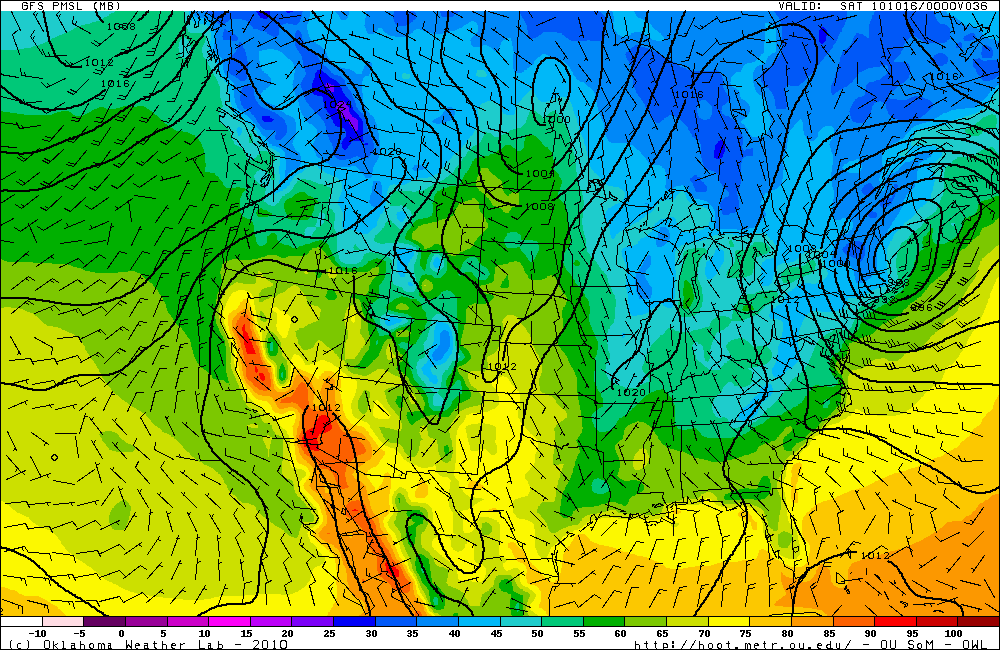
This surface map, courtesy of the Oklahoma Weather Lab, shows a 988 mb low (fairly low pressure for this time of year) centered over southern Maine. The lines represent surface pressure, and the colors represent surface temperature. Temperatures at this time are forecast to be in the 30s in northeastern New York, Vermont, western New Hampshire, and northwestern Massachusetts.
The most likely scenario is for there to be some snow in the mountains of Vermont and New Hampshire tomorrow night, with cold rain and the possibility for flooding over much of the rest of New England.
It’s probably a good thing that the American League Championship Series starts in Texas tomorrow night. I can’t cheer for the Rangers and Cliff Lee, especially after the Rangers got Lee from the Mariners this year. So GO YANKEES!!
Permalink
10.12.10
Posted in Non-US Weather, Weather News at 11:53 am by Rebekah
This week’s post in the global weather and climate series features Copiapó, Chile.
-
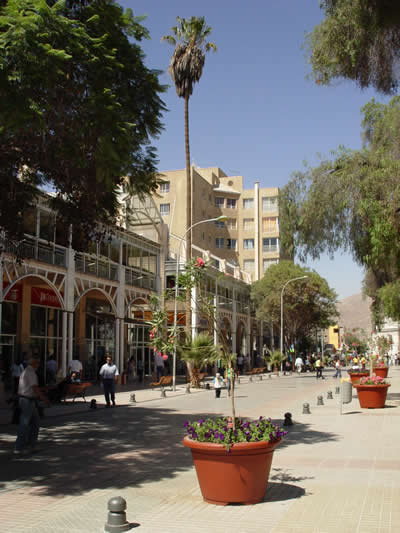
Mall Plaza Real in Copiapó, Chile. From Wikipedia.
As you’ve probably heard, after spending over 2 months in a collapsed mine, 33 miners in northern Chile are about to be lifted up to safety. The nearest town to this mine is Copiapó, so this week I thought I’d take a look at what the climate is like there.
Copiapó, in northern Chile, was founded in 1744 by the Copiapó River, which has since then dried up. The city is primarily a copper mining town (silver is also mined around there), with agriculture (grapes, olives, tomatoes, avocadoes, and citrus fruits) coming second. Because Copiapó is surrounded by the Atacama Desert, it receives very little rain. The Atacama Desert is the driest desert on Earth, even though it lies on the Pacific Coast. Primary reasons the desert is so dry include the Humbolt Current off the coast (cold waters well up off the coast, keeping the air drier) and the Andes Mountains to the west (wind comes from the west and creates a rain shadow on the leeward side of the mountains). Copiapó is home to 129,091 people.
A few more facts about Copiapó (from Wikipedia):
- Time zone: Chile Standard Time (UTC-4) or Chile Summer Time (UTC-3)
- Elevation: 1,283 feet
- Climate zone: Desert / steppe
- Average high temperature: 79 °F (26 °C)
- Average low temperature: 55 °F (13 °C)
- Average annual precipitation: 0.5 inch (12 mm)
Current weather: Copiapó is the Southern Hemisphere, so it is currently spring there with summer coming soon. High temperatures this week are expected to start in the upper 60s, getting to upper 70s by the end of the week. Lows are forecast to be in the mid-40s to lower 50s. Skies are mostly clear although there is a slight chance of a trace of rain for tonight. Fog is common at night.
Here is a recent visible satellite image for South America, showing the location of Copiapó (from Meteo Chile, click to enlarge):
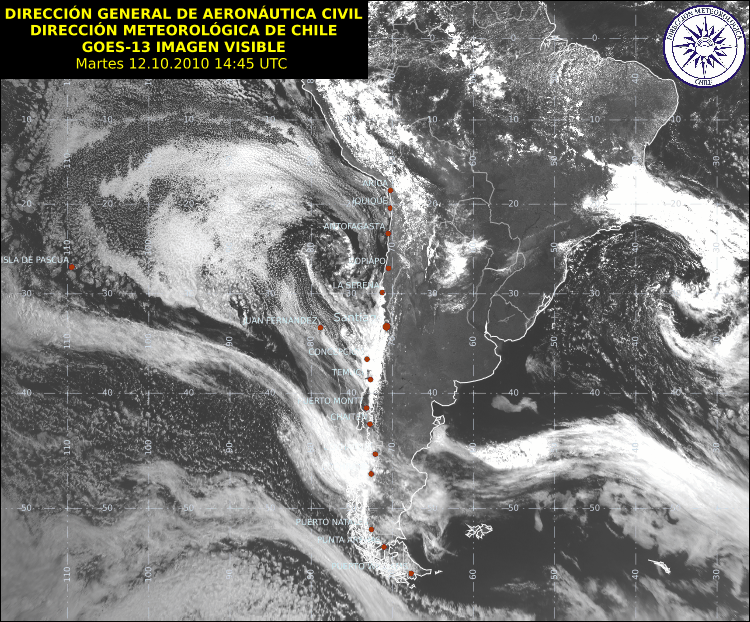
For weather maps and information on current and forecast Copiapó and Chile weather, see Meteo Chile (Chile’s meteorological agency website, in Spanish), Weather Online UK (maps, models, and forecasts for around the world), and Weather Underground.
For more information on Copiapó, here’s a link to Wikipedia, and here’s a link to Spanish Wikipedia (even more info, just in Spanish).
Next Tuesday I plan to take a look at the climate and weather in another part of the globe. As always, if you have any comments or suggestions for future cities, please leave a comment!
Permalink
09.24.10
Posted in Tropical Weather, Weather News at 3:54 pm by Rebekah
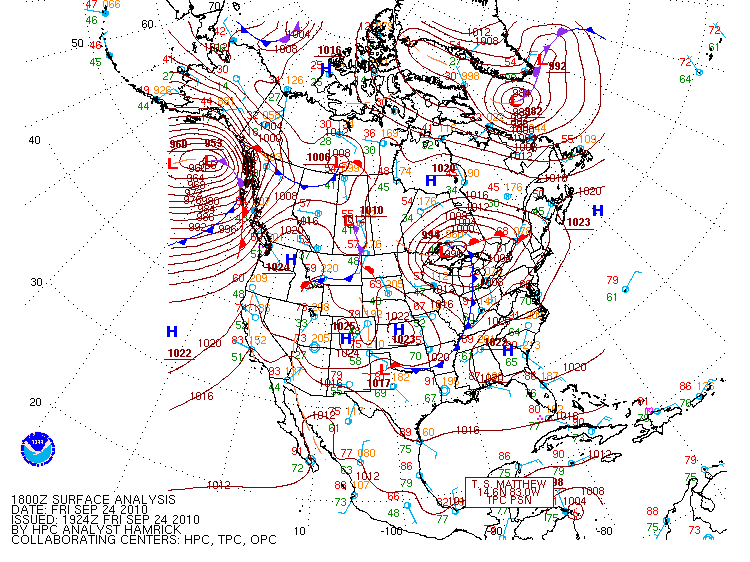
Check out this 18Z (1pm Central Daylight Time) surface analysis from the Hydrometeorological Prediction Center (click to enlarge).
There’s an extratropical cyclone just north of Lake Superior, and a cold front extending southwestward through southern Oklahoma. The low pressure system brought lots of rain to the upper Midwest, and is causing flooding problems in Minnesota and Wisconsin.
NWS rainfall and flooding reports here.
Dramatic news footage of a bridge wiped out in Minnesota.
Cooler air is still to come, behind another cold front that is forecast to make it through Oklahoma Saturday night. This front will bring much more fall-like temperatures to the central and possibly eastern US. The NWS forecast low for Norman on Sunday night is just 51 °F!
Note also that Tropical Storm Matthew is on the map; it’s just now making landfall in Nicaragua. Models do show that another tropical system could form in the Caribbean or Gulf of Mexico within a week. This tropical cyclone could have a chance at making landfall somewhere along the Gulf Coast by the end of next week, although it’s too far out to say if this will actually happen.
Permalink
09.21.10
Posted in Non-US Weather, Weather News at 4:06 pm by Rebekah
This week’s post in the global weather and climate series features Sarh, Chad.
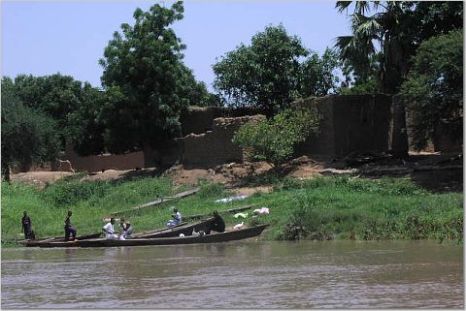
Chari River, near Sarh, Chad. From Kejsa Media Network.
This time of year, central African weather is dominated by tropical (aka easterly) waves. Tropical waves are low-level troughs within the tropics, which provide lift for thunderstorms and are a major source for tropical cyclone development.
Sarh, in south central Chad, is currently under a cloud cluster associated with one of these tropical waves. If the tropical wave survives its journey across Africa, it could have a chance at becoming a tropical cyclone in the Atlantic Ocean.
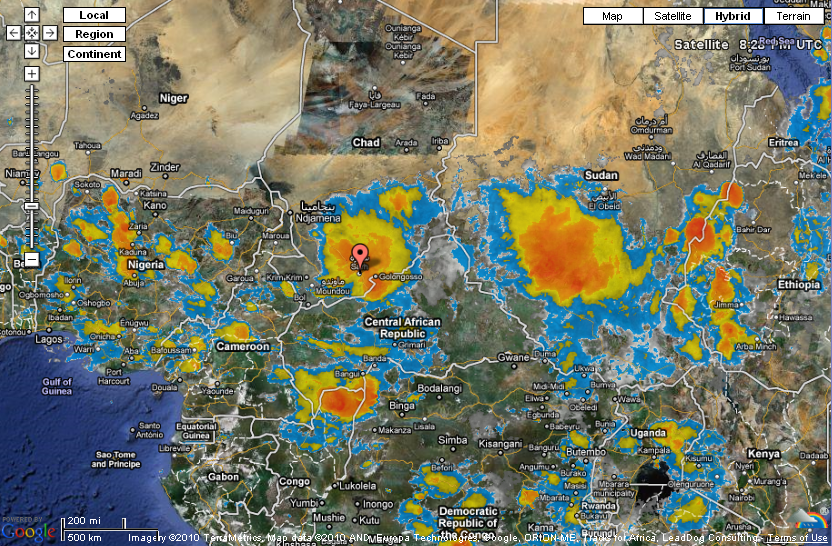
Infrared satellite image over central Africa, showing at least two cloud clusters associated with tropical waves. From Weather Underground. Click to enlarge.
Sarh has a population of 108,061, and is the 3rd largest city in Chad. Located on the Chari River, Sarh is about 30 miles north of the Central African Republic. Sarh, formerly known as Fort Archambault, was founded by the French for returnees from Congo-Ocean Railway labor camps. Today Sarh is a major transport hub and a center for the cotton industry.
A few more facts about Sarh (weather data from World Climate):
- Time zone: West Africa Time (UTC+1)
- Elevation: 1,138 feet
- Climate zone: Tropical savanna
- Average high temperature: 95 °F (35 °C)
- Average low temperature: 71 °F (22 °C)
- Average annual precipitation: 38 inches (969 mm)
Current weather: Sarh is expecting thunderstorms to continue throughout this week and next, as a result of the tropical wave currently over Sarh and the next one coming their way. Highs this week will be in the upper 80s to lower 90s, with lows in the lower 70s and dewpoints in the upper 60s to lower 70s.
For weather maps and information on current and forecast Sarh and Chad weather, see Weather Online UK (maps, models, and forecasts for around the world), and Weather Underground.
For more information on Sarh, here’s a link to Wikipedia.
Next Tuesday I plan to take a look at the climate and weather in another part of the globe. As always, if you have any comments or suggestions for future cities, please leave a comment on this post!
Permalink
09.14.10
Posted in Non-US Weather, Weather News at 3:50 pm by Rebekah
This week’s post in the global weather and climate series features Naples, Italy.

The Bay of Naples, from the Sant’Elmo Castle. Mount Vesuvius is on the left. Courtesy of Wikipedia. Click to enlarge.
Naples (Napoli in Italian) is one of the oldest cities in the world, founded sometime in the 9th century BC. It is needless to say that Naples has a long, rich European history, as the city has seen several civilizations come and go. Naples is situated on the Bay of Naples, on the southwest Italian coast. The city lies in the shadow of Mount Vesuvius, which famously blew up in 79 AD, burying the city of Pompeii for nearly 1600 years.
A few more facts about Naples (from Wikipedia):
- Time zone: Central European Time (UTC+1) or Central European Summer Time (UTC+2)
- Elevation: 0 to 56 feet
- Climate zone: Mediterranean (mild, wet winters, warm/hot, dry summers)
- Average high temperature: 69 °F (20 °C)
- Average low temperature: 51 °F (10 °C)
- Average annual precipitation: 39.6 inches (1,007 mm)
Naples’ average monthly low and high temperatures range from 39 °F to 85 °F.
Current weather: Southern Italy is currently under weak low pressure, with no big disturbances nearby (see below, from the UK Met Office). The weather is pretty mild, with highs in the upper 70s this week and lows in the lower 60s. Skies are clear, but there is a slight chance for rain tonight. Low pressure systems are staying primarily in northern Europe, with high pressure systems south of Italy, so the weather is expected to remain pleasant.
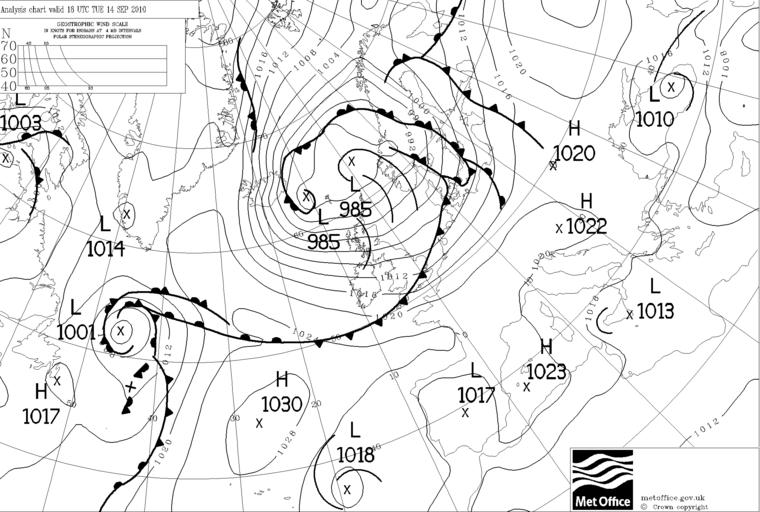
Italy occasionally gets severe thunderstorms, especially in the fall. ESTOFEX, the European Storm Forecast Experiment (forecasts for severe weather in Europe), has actually predicted a slight risk of severe storms over southern Italy for today and tonight (see below). This severe weather risk is at 5% for severe weather within 40 km (25 miles) of a point. Severe weather is defined as a tornado, hail of up to 2 cm (0.79 in) in diameter, wind speeds of at least 25 m/s (56 mph), or excessive rainfall of 60 mm (2.4 in) in 3 hours or 90 mm (3.5 in) in 6 hours.
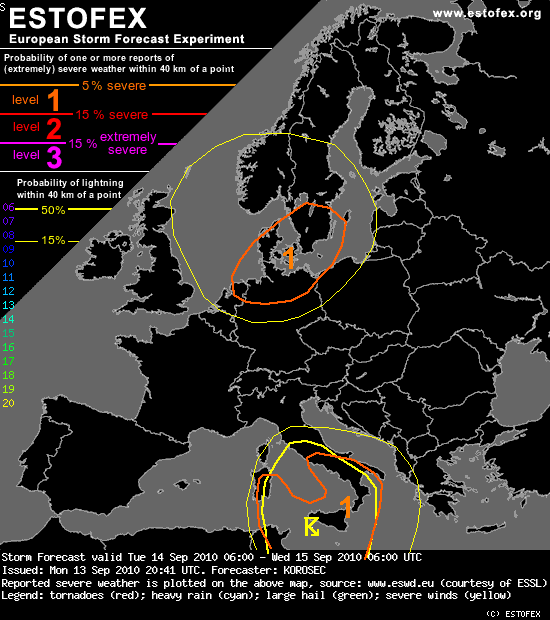
The discussion for southern Italy read (emphasis added):
“Areas from Thyrrenian sea southwards into the southern Mediterranean will be affected by the slowly moving upper low. Moderate instability seems to become available, which should support deep convection. Despite the rather limited shear in place, as the mid-level jet slowly weakens, numerous organized storms will form. Multicells and a couple of rotating storms can be possible. Given their rather slow moving nature, they should bring threat for intense rainfalls as well as some marginal hail in the beginning before they cluster. Train-effect of the storms should locally enhance flash floods. Warm SSTs and steep LL lapse rates could also result in a couple of waterspouts.”
The ESTOFEX website can be found here.
For weather maps and information on current and forecast Neapolitan (yes, that’s of Naples) and Italian weather, see Meteo Italia (Italy’s weather service), Weather Online UK (maps, models, and forecast for around the world), and Weather Underground.
For more information on Naples, here’s a link to Wikipedia.
Next Tuesday I plan to take a look at the climate and weather in another part of the globe. As always, if you have any comments or suggestions for future cities, please leave a comment on this post!
Permalink
« Previous Page — « Previous entries « Previous Page · Next Page » Next entries » — Next Page »








